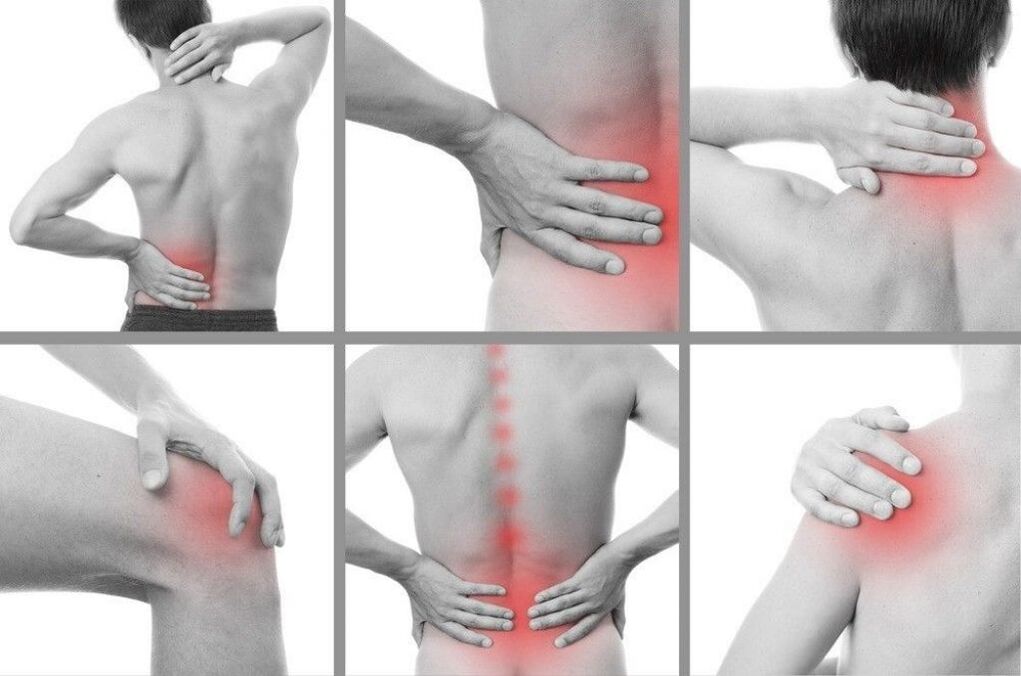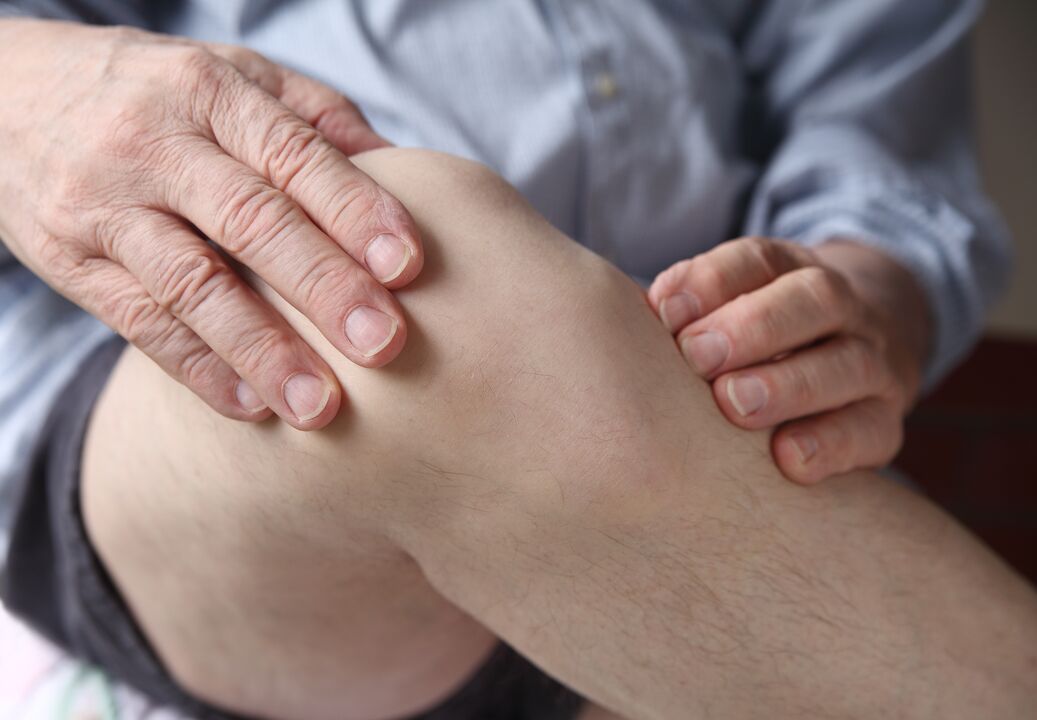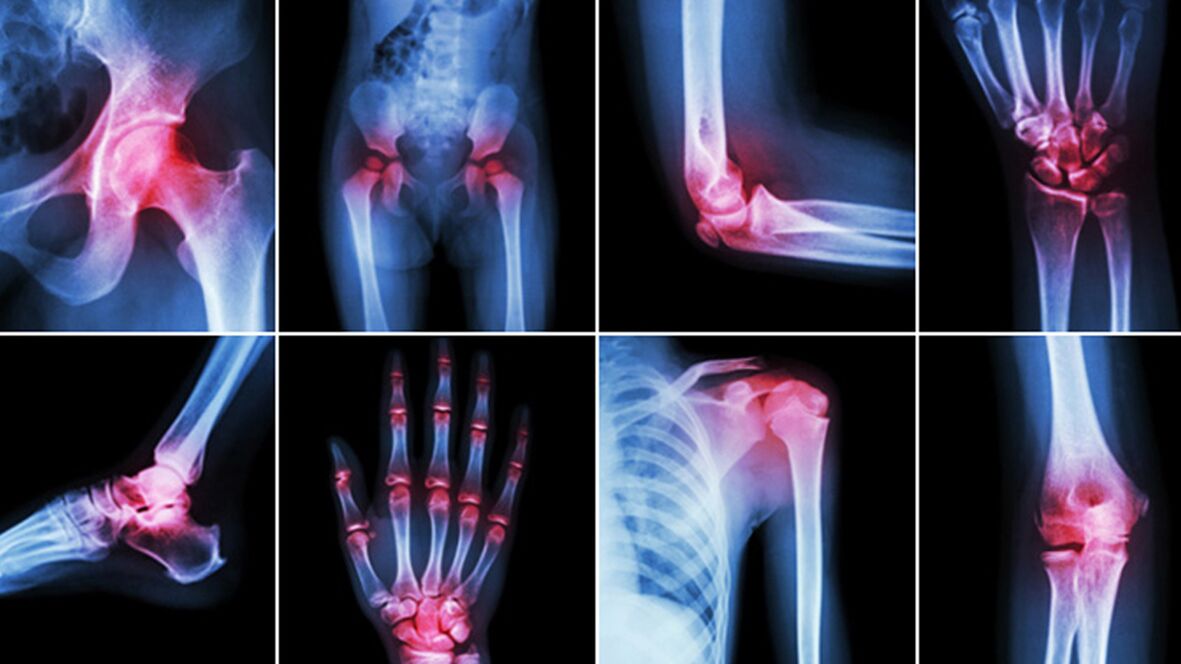Joint pain throughout the body is not a disease, but a symptom. At the same time, painful sensations often spread to the muscles, so it can even be difficult to get out of bed. Many diseases lead to such unpleasant consequences, pain treatment is impossible without determining the exact cause. What symptoms to focus on and what to do?
The main cause of pain
If pain occurs in more than one joint, not several, but all at once, this is a sign of systemic damage to the body. In addition, it is difficult to understand exactly where the pain is localized - in a joint, muscle, bone, or everywhere at once. The pain is felt throughout the body, making it difficult to locate. Because of what all joints can hurt:
- Excessive physical activity.
- Infectious Diseases.
- Pathological changes in connective tissues.
- Diseases of the circulatory system.
- Cancers.
- Nerve pain.
As can be seen above, it is not immediately possible to understand what causes the pain. The exact cause can only be determined after passing the appropriate examinations. If we exclude the heavy physical work of the past, then we are talking about diseases that need to be treated.

Why is it dangerous?
First of all, intense pain throughout the body reduces mobility, but this is not the main danger. The main threat is this disease, which causes painful sensations in the joints. Self-medication in such cases is extremely dangerous, since it will lead to only the cessation of symptoms, while the disease progresses on its own. You can relieve pain and swelling on your own, but then you definitely need to consult your doctor.
Symptoms of illness
Any disease has its characteristic symptoms. Since pain is the most noticeable sign, the first thing to do is to identify its characteristics:
- Type of pain (pain, stinging, cramps).
- Localized (joints, surrounding muscles, bones).
- Whether it moves throughout the body, or a separate area is constantly in pain.
- Constant pain or intermittent seizures.
- Intensity of sensations.

In addition, the patient may feel weak, severe fatigue, or muscle aches. Other symptoms vary depending on the specific cause of the pain:
- Overvoltage. . . Excessive physical activity the day before can lead to body aches the next day. This is because lactic acid production builds up in the muscles. In this case, a thorough warm-up is enough to relieve the pain.
- Infection. . . Joint pain often accompanies illnesses such as flu, fever, meningitis, even acute respiratory infections in severe form. In addition to pain, symptoms are also accompanied by cough, skin rash, chills, weakness, nausea and indigestion, and high body temperature.
- Hepatitis. . . With liver damage, in addition to possible pain, the skin and whites of the eyes are yellow, loss of appetite.
- Pathological changes in connective tissue. . . Arthritis, lupus erythematosus, polymyositis - all of these can cause joint pain. In addition, certain diseases of the heart, kidneys, lungs, vascular and nervous systems can also lead to painful sensations in the joints.
- Blood diseases. . . In addition to body aches, the patient also has a fever, pale skin, enlarged lymph nodes, liver and spleen. In this state, vulnerability to infectious diseases increases. In their acute form, such diseases are life-threatening if not treated promptly.
- Cancer. . . With cancerous tissue damage, joint pain may appear earlier than the disease is diagnosed. In addition, symptoms such as weakness, weight loss, poor appetite, fever, mood swings, depression tell about cancer.
- Nerve pain. . . With diseases of the nervous system, in addition to pain in the joints and muscles, the patient may experience numbness in the fingertips, loss of sensitivity, weakness. In addition, the hair begins to fall out and the skin becomes dry and thinner.
If joint pain is accompanied by any of the symptoms listed, this is reason to consult a specialist.
Diagnostic method
Who to contact when complaining of pain throughout the body:
- Rheumatologist.
- Hematologist.
- Oncology doctor.
- Infected person.
After the doctor examines the patient and hears the complaint, the patient should be examined. To confirm the diagnosis, the following diagnostic methods are used:
- Urine analysis.
- General blood analysis.
- Blood biochemistry.
- LHC blood and smear analysis.
- Puncture the marrow.
- CT and MRI.
- Neuromuscular.
A comprehensive examination will give a complete picture of the patient's condition. Only then can we talk about a particular disease and prescribe treatment.

Treatment of joint pain
The method of treatment is selected by the doctor depending on the data obtained during the examination. The most common is drug treatment. Many medications can treat almost any cause of joint pain. The choice of drug classes depends on the type of disease:
- Antibiotics
- Anti-inflammatory drugs.
- Analgesic.
- Hormonal agents.
- Immunosuppressive drugs
- Cytostatic drugs.
Many drugs from the groups listed have serious contraindications - some should not be taken in the presence of a tumor. In addition, almost all drugs have contraindications and side effects. This is one of the reasons why it is not possible to choose drugs independently and use them mindlessly. The exact dosage and type of medicine are prescribed only by a doctor. If after the course of taking the drug there is no result, the specialist can substitute another drug.

Surgery is required in severe cases when drug therapy is impotent. Usually, surgery is prescribed for tumor diseases and blood diseases. In the case of cancer, surgery can be supplemented with radiation therapy, and in the case of serious blood diseases, a bone marrow transplant is required.
Preventive
To prevent your joints from hurting, you need to follow six simple recommendations:
- Proper nutrition. . . Firstly, a balanced menu will provide the body with all the substances necessary for normal functioning. Second, eating in moderation will help you maintain your weight. Obesity is known to be one of the causes of joint pain.
- Chondroitin and Glucosamine. . . These substances are essential for joint health. They are found in meat, cartilage and fish.
- Drinking mode. . . Fluids help to set up metabolism, if there is not enough water in the body, the nutrition of organs, muscles and joints will not be enough. You need to drink about 2 liters of water per day.
- Physical activity. . . Even the usual exercise in the morning will help normal blood circulation, so that the joints will receive enough nutrients.
- Careful. . . Any joint injury should be avoided.
- Complex of vitamins and functional foods. . . Missing vitamins and minerals can be obtained from preparations, the main thing is to choose them correctly.
These simple tips can help keep your joints healthy. In addition to adjusting the diet, activities need to be periodically examined by the doctor. This will help to recognize the disease in time and start treatment.

















































